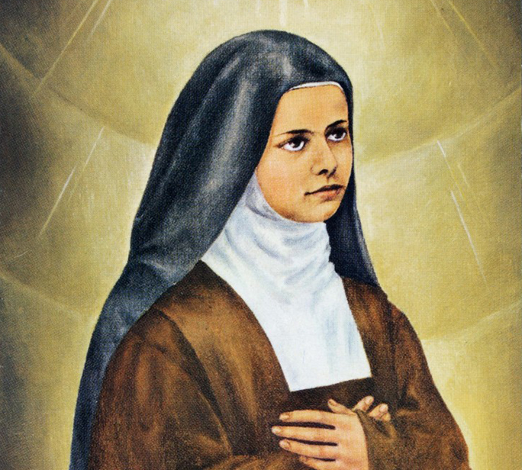Saints of November: St. Martin, St. Elizabeth, & St. Clement 1
Every month, the church remembers men and women whose lives remind us what love, courage, and faithfulness can look like in the real world. November gives us three remarkable witnesses: a young French mystic whose suffering deepened her joy, a Peruvian healer who turned everyday tasks into prayer, and an early church leader who carried the apostles’ teachings into the next generation.
Their stories are wildly different — and yet each one offers a glimpse into what a life shaped by love looks like.
St. Martin de Porres
(November 3)
Martin de Porres was born in Lima, Peru in 1579 to a Spanish nobleman and a formerly enslaved Black woman from Panama. Because of his mixed race, he grew up facing significant prejudice and strict racist laws. He was raised by a single mother, lived in deep poverty, and was treated as less-than in the society around him — even in the church he longed to serve.
And yet Martin became known as the first Black saint in the Americas, and the patron saint of social justice, racial harmony, and public health workers.
He was also affectionately called “the saint of the broom.”
Why? Because he insisted that holiness was not reserved for grand, dramatic gestures. Instead, he believed the sacred could be found in sweeping floors, caring for the sick, and weeding a garden.
He wrote:
“Everything, even sweeping, scraping vegetables, weeding a garden and waiting on the sick could be a prayer, if it were offered to God.”
Stories tell of miraculous works — instant healings, bilocation, even aerial flights — but perhaps his truest miracle was the compassion he carried into ordinary days.
Martin died November 3, 1639, but his life still whispers a reminder: holiness grows in the quiet places, in humble work, in small acts of love that change the world one person at a time.
Talk about it: What’s one simple, everyday task in our home that could become a prayer or act of love?
St. Elizabeth of the Trinity
(November 8)
Elizabeth Catez was born in France on July 18, 1880. At 21, she entered a Carmelite convent, where her life was marked by deep spiritual sensitivity and — eventually — profound physical suffering. She developed Addison’s disease, which slowly weakened her and ultimately ended her life at just 26 years old.
But even as her body failed, Elizabeth’s spiritual life became radiant. She believed that all people are invited to abide in the mystery of the Triune God — that our purpose is to live attuned to divine love.
In one of her poems, she wrote:
“I listened to my Word whom I adore and I heard the song that is sung in the bosom of the Divine.”
To encourage another sister in the convent, she repeated the same phrase six times:
“Let yourself be loved.”
They are words that feel like a prayer in themselves. As she approached her final moments, her last reported words were:
“I am going to Life, to Love, to Light.”
Her short life continues to remind us that suffering does not silence joy, and that the deepest truths are often the simplest: let yourself be loved.
Talk about it: Where do you feel most connected to God’s love right now?
Saint Clement I (November 23)
Clement lived in the very earliest days of the church, from 35–99 AD. He became the fourth Bishop of Rome — the third successor to Peter — making him a key bridge between the apostles of Jesus and the generations that followed.
He is one of the five “apostolic fathers,” those early leaders formed directly by the apostles. Clement himself was a disciple of Peter and Paul, carrying forward their teachings at a time when the church was young, fragile, and growing.
Clement is most known for supporting apostolic succession — the belief that the spiritual authority given by Jesus to the apostles was passed down through the laying on of hands by each generation of bishops and leaders. It’s the same idea reflected in the Nicene Creed’s phrase:
“one holy catholic and apostolic Church.”
(Where “catholic” simply means “universal.”)
Clement is also widely believed to have written a letter known as Clement to the Corinthians — an important early Christian writing, though not included in the New Testament.
His death is debated: some traditions tell of a dramatic martyrdom, tied to an anchor and drowned in the sea; others say he died naturally during the reign of Emperor Trajan. Either way, his legacy is one of faithfulness, continuity, and deep connection to the earliest Christian story.
Talk about it: What does it mean to belong to a story of faith that stretches back thousands of years?
What brings these three lives together?
A man who found holiness in sweeping floors.
A young woman who discovered love in her suffering.
An early leader who carried the apostles’ teachings into the future.
Each one invites us to see our own lives differently — not as ordinary, but as full of possibility.
Full of ways to love.
Full of ways to serve.
Full of ways to live attuned to the One who loves us.
This November, may their stories remind us that courage looks different for each of us — and that a faithful life is always, always about love.



